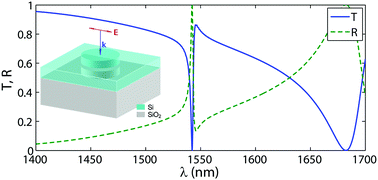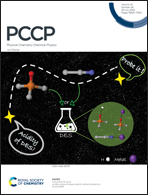All-dielectric bilayer complementary metasurfaces supporting quasi-bound states in the continuum induced by intrinsically broken out-of-plane symmetry†
Abstract
High-Q resonances driven by quasi-bound states in the continuum (quasi-BIC) in metasurfaces have recently attracted much attention in the field of photonics. This work shows that all-dielectric bilayer complementary metasurfaces support strong resonances with narrow spectral widths, which is attributed to the generation of quasi-BIC induced by intrinsically broken out-of-plane symmetry. They can be simply fabricated by depositing a high-index dielectric layer on the metasurface made of a low-index material. Unlike most of the quasi-BICs originating from in-plane symmetry breaking, the proposed metasurfaces do not need complicated design of their unit cell structures due to the inherent broken symmetry: by taking simple structures, one can obtain strongly resonant metasurfaces with desired functionalities such as circular dichroism and polarization independence. In particular, the eigenfrequency of the guiding mode in the slab structure as the original BIC can be analytically determined from the dispersion relationship, implying that the proper structural parameters can be predicted without large computational burden. Due to the above several advantages, the presented results offer a promising strategy for designing and fabricating metasurfaces supporting high-Q resonances with diverse functionalities.



 Please wait while we load your content...
Please wait while we load your content...